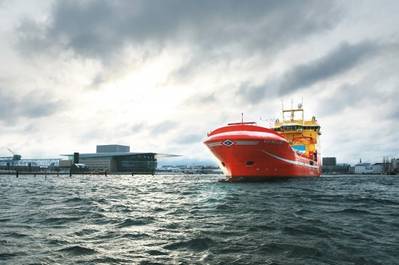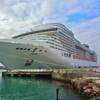Corvus Lithium Energy Storage DNV-GL Type Approved
Corvus Energy’s lithium energy storage system is the world’s first to be type- approved by DNV GL. The type approval makes increased fuel efficiency and greatly reduced emissions available for heavy industries such as offshore oil and gas and commercial shipping, Corvus said.
According to the manufacturer, rigorous testing over several years proves that heavy offshore machinery will maintain power and safety during operations using Corvus Energy’s AT6500 module.
Designed and built to handle the world’s most hazardous ocean conditions, the heavy-duty batteries made by Corvus Energy are reportedly up to 10 times more powerful than lead-acid batteries and significantly more powerful than current alternative lithium competitors. The system can operate from – 40-60 degrees Celsius and withstand shocks of 30 G and vibration of 8 G. (When installed on a DNV classed vessel the Type Approved Corvus batteries are to be installed according to the DNV Battery Power Class rules.)
The technology is ready to be adopted by the industry, and the battery has proven strong enough to be used as the only source of power for a ferry, Folgefonn, operating in Norway. An offshore supply vessel, Eidesvik’s Viking Lady, uses the battery to reduce or eliminate inefficient low-load engine operation and provide full operation and spinning reserve capabilities.
The Corvus Energy intelligent battery management system constantly monitors each module. Sealed inside the battery module, in purpose built aluminum casings, the battery management system is completely water and tamper proof. In combination with the battery module, pack controller and array manager, the system boasts multiple levels of redundant safety features.
The battery management system is responsible for monitoring and controlling the system. It will then relay the information to the pack, providing the management control to coordinate all the modules in the array. The data is then transmitted via an industry standard CanBus communications port, allowing it to be monitored at a terminal located at the pack location or remotely via a web-based interface or smart phone application.
The remote monitoring allows a system manager to monitor the pack from any location via web or smart phone and make power usage changes as needed. It also allows Corvus Energy to monitor each installation down to the cell level, and in the unlikely event that a module begins to go bad or out of spec, the module can be replaced during normal-maintenance intervals on a planned basis as opposed to an emergency situation.
The battery system can withstand being irradiated with high-intensity signals, even with disturbance signals intentionally added to any of the cables. This means it is able to effectively communicate with other batteries in the array and the array controller in all conditions regardless of ambient signals or noise.
In and of itself, the BMS does not produce any harmful noise emissions — radiated or conducted — and it can be used in any vessel without interfering with other equipment.
dnv.com
corvus-energy.com













